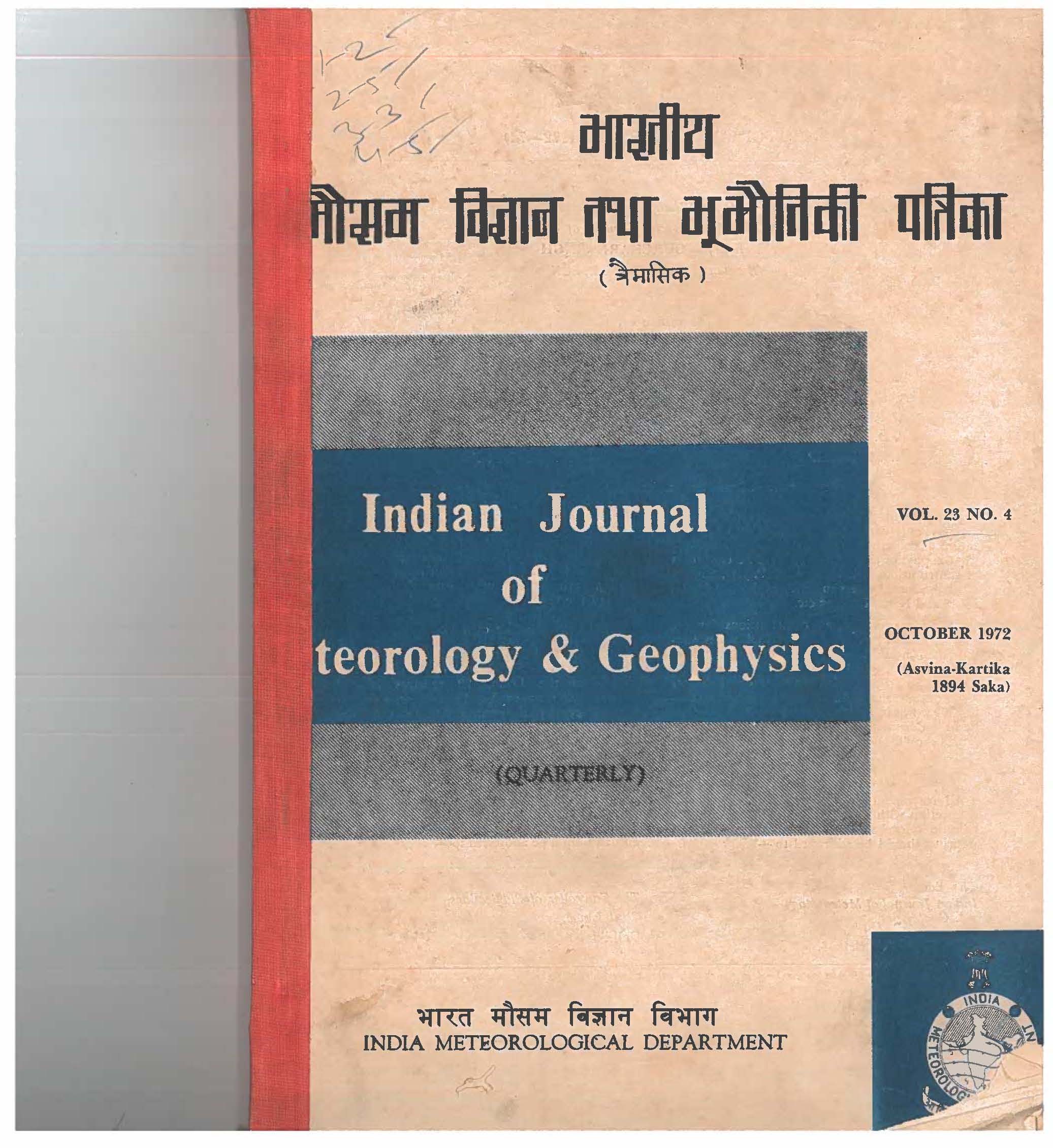Oceanography of the Arabian Sea during the southwest monsoon season-Part III : Salinity
DOI:
https://doi.org/10.54302/mausam.v23i4.5307Abstract
The distribution of salinity in the Arabian Sea during the southwest monsoon season is presented through several vertical sections and spatial distribution charts. The vertical salinity structure has been found to be quite complex and shows several maxima and minima upto depths of about 1000 m. An analysis of the water mass characteristics shows that the Arabian Sea high salinity water forms in the northeastern Arabian Sea as a result of excessive evaporation over precipitation and is located between 300 and 500 el/t steric levels. The Persian Gulf and Red Sea Waters have been identified by their salinity maxima occurring above and below the 100 cl/t surface respectively. In addition, it has been found that, in the depth range of 0-1000 m, the Antarctic intermediate water, subtropical subsurface water and the south equatorial water penetrate into the Arabian Sea at different levels and intermingling of these with the Red Sea, Persian Gulf and Arabian Sea high salinity waters give rise to the observed complexities in the vertical salinity structure. A comparison of the curves of potential temperature versus depth, salinity and oxyty in the Somali and Arabian basins with those in the circumpolar regions has shown that the deep and bottom water mass in these basins at depth exceeding 2500 m is of circumpolar origin.
Downloads
Published
How to Cite
Issue
Section
License
Copyright (c) 2022 MAUSAM

This work is licensed under a Creative Commons Attribution-NonCommercial 4.0 International License.
All articles published by MAUSAM are licensed under the Creative Commons Attribution 4.0 International License. This permits anyone.
Anyone is free:
- To Share - to copy, distribute and transmit the work
- To Remix - to adapt the work.
Under the following conditions:
- Share - copy and redistribute the material in any medium or format
- Adapt - remix, transform, and build upon the material for any purpose, even
commercially.



